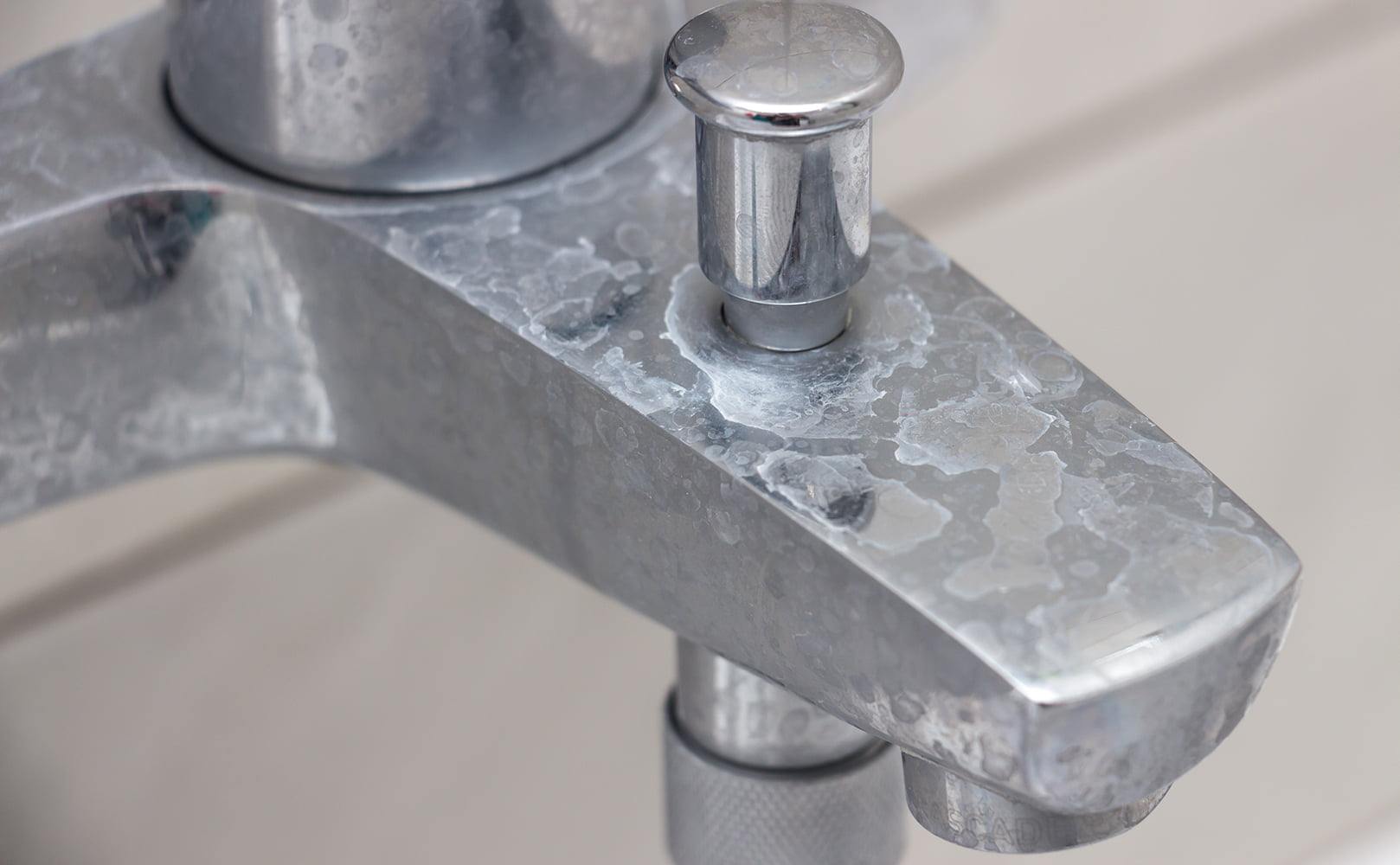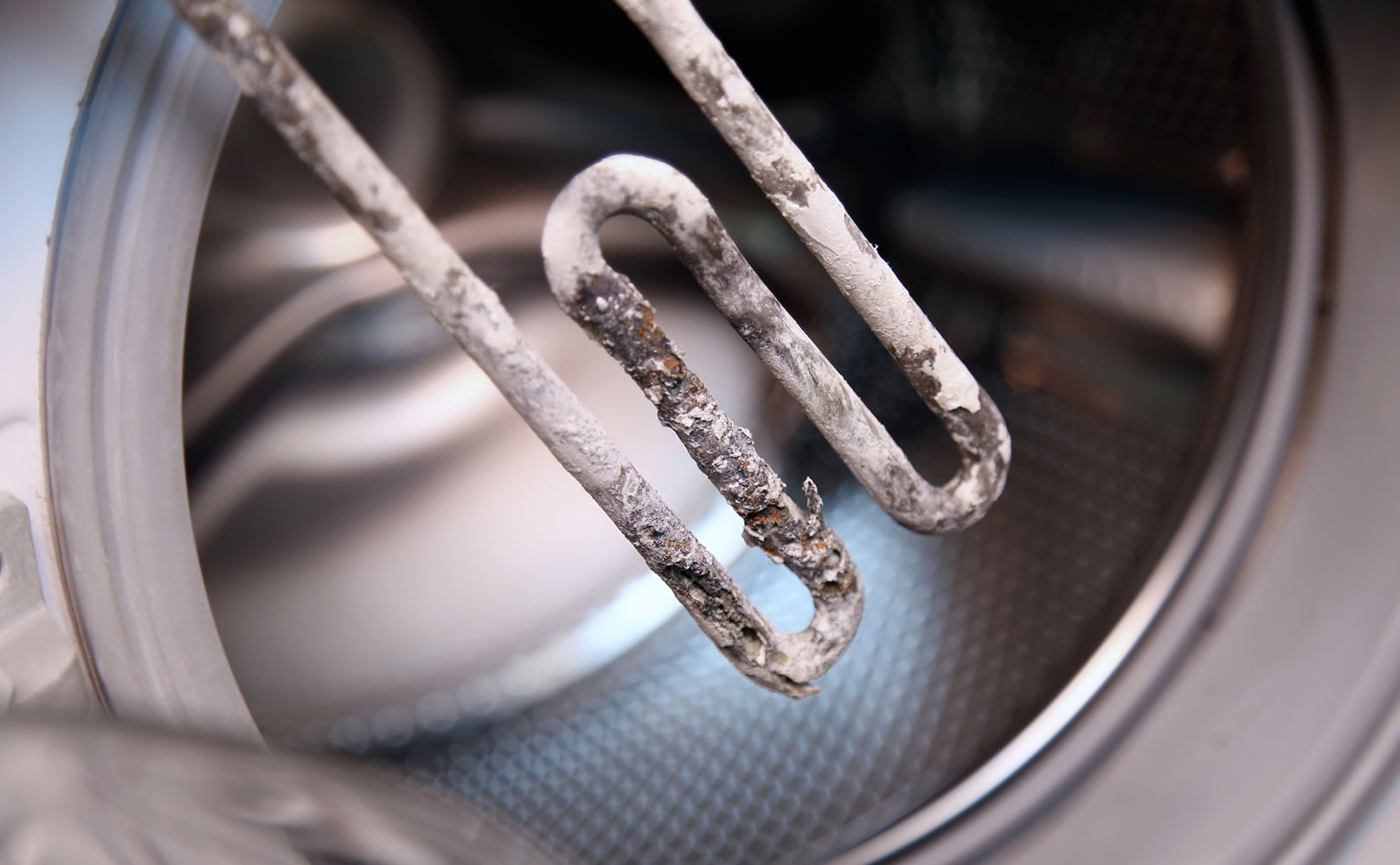Does a Whole House Water Filter Remove Calcium from Water?
Written by: Gene Fitzgerald // Last Updated: Jan 4, 2023
This page may contain affiliate links. If you buy a product or service through such a link we earn a commission at no extra cost to you. Learn more.
Our water contains several different impurities, calcium being one.
Generally, calcium is the mineral that contributes to water hardness, and it mostly comes from groundwater. Though low calcium levels might not harden water noticeably, a range of 100 to 500 ppm will.
People often consider using a whole house water filter to remove calcium from water, but does it work?
That’s precisely what we’ll discuss in the guide below. Read on!
Key Takeaways
- Some whole house water filters can remove calcium from water.
- However, most are not specifically designed to do so, and thus are not very effective in that regard.
- The best way to remove calcium from water is using a water softener.
Does a Whole House Water Filter Remove Calcium from Water?
Whole house water filters typically use a multi-stage filtration process to eliminate water contaminants and improve your water’s taste and smell.
Note that a regular whole house water filter is not designed to remove calcium from water however!
Some filtration systems have a small-enough micron rating, so they might catch larger calcium flakes, but that’s about it.
What actually works to remove calcium from water, though, is a water softener. Of course, water softeners are not the same as water filters (more in the sections below).
Where Does Calcium in Water Come from?
Calcium naturally occurs in water, dissolving from rocks, including apatite, fluorite, limestone, marble, calcite, gypsum, and dolomite.
Overall, the primary source of calcium is rocks, particularly gypsum and limestone.
How to Measure Calcium in Water
Before discussing how to measure calcium in water, it is imperative to know what water hardness is in the first place.
Water is described as soft, moderately hard, or hard depending on the amount of calcium carbonate present.
Typically, calcium concentrations in water are measured in gpg (grains per gallon) or mg/L (milligram per liter) or ppm (parts per million). The first is the industry standard.
If you want to convert mg/L or ppm to gpg, you’d need to divide it by 17.12. Like so:
1 ppm = 1mg/L and 1 gpg ≈ 17.12 ppm = 17.12 mg/L
Here’s how you can measure the calcium concentration in your water.
- Collect a water sample and send it to an independent lab. A lab professional will test your water for calcium levels and provide you with precise reports.
- You can also request a free water quality report from your local water supplier (only possible if you’re on city water). Typically, you can access water quality reports online too. Other than that, contact the utility and ask them directly.
- Lastly, you can measure calcium levels yourself. All you need to do is purchase a DIY testing kit. DIY test kits are available for less than $20.
Though you can measure calcium levels yourself, we highly recommend sending a water sample to an independent lab. Yes, the procedure will require money and time, but a lab professional conducts tests complying to strict industry standards. Besides, the reports are accurate, which is perhaps all you need.
Why Is Calcium in Water a Problem?
Let’s get this straight; calcium is not life-threatening. However, excess calcium in your water supply can lead to a few problems.
- Hard water causes stubborn stains on kitchen and bath surfaces. The stains usually form when water evaporates and leaves limescale behind.
- High calcium levels in water cause hair tangles and also dry the skin. On top of that, you may experience dandruff and itchiness.
- Calcium accumulation in pipes can reduce flow rates, eventually causing leakage, and may result in costly replacements.
- Washing clothes in hard water can dull the clothing color over time.
- A few synthetic cleansers become less effective with hard water. Why? The active ingredient in cleansers gets inactivated due to the hardness minerals.
Calcium and Health Effects
As stated earlier, calcium in water can stain bathtubs, kitchen faucets, and sinks. Besides, it may cause skin dryness.
Nonetheless, there are no adverse effects of calcium ingestion through drinking water on health. Instead, health experts consider it beneficial. For instance, studies show that sufficient calcium intake can reduce bone loss and fractures, and increase bone mass growth in patients with osteoporosis.
How to Remove Calcium from Water
If you have an excess amount of calcium in your water supply and it’s staining your house appliances, it’s better to get rid of it.
Remember, a regular filter system may catch larger calcium particles but does not explicitly work for that purpose. Instead, what works to eliminate calcium from your water is a water softener.
Water Softening
Treating hard water using a water softener significantly reduces calcium levels. This prevents your kitchen and bathroom surfaces from stains.
Note that a water softener should not be confused with a filtration system that purifies water. Instead, it eliminates hardness minerals (including calcium) but does nothing more.
Water softeners use an ion-exchange process to replace calcium and magnesium with potassium or sodium, softening your water.
Here’s a full overview of the benefits of salt-based water softener systems:
- A good quality water softener will prevent scale deposits and increase the life of appliances like coffee makers, water heaters, dishwashers, and more. Extending the life of your home appliances will reduce maintenance and repair costs.
- No more stubborn stains! Fewer stains on sinks, dishes, windows, and glassware will make your life easy.
- When your water isn’t chock full of calcium, you will be able to clean faster and more effectively.
- Reduced calcium in your water will eliminate the problem of faded fabrics.
Reverse Osmosis
Reverse osmosis systems are famous for removing almost all contaminants and impurities from water. This includes minerals and salts. In other words, a reverse osmosis system can be used to make hard water soft.
But, RO systems are usually installed at a single-point-of-use only instead of filtering water for the whole house. So they won’t help you protect your plumbing system, unless you install a whole house reverse osmosis system.
If you have any thoughts about the question, does a whole house water filter remove calcium, please don’t hesitate to leave a comment below!
Information provided on BOS is for educational purposes only. The products and services we review may not be right for your individual circumstances.
We adhere to strict editorial guidelines. Rest assured, the opinions expressed have not been provided, reviewed, or otherwise endorsed by our partners – they are unbiased, independent, and the author’s alone. We fact-check all content for accuracy. It is accurate as of the date posted and to the best of our knowledge.



